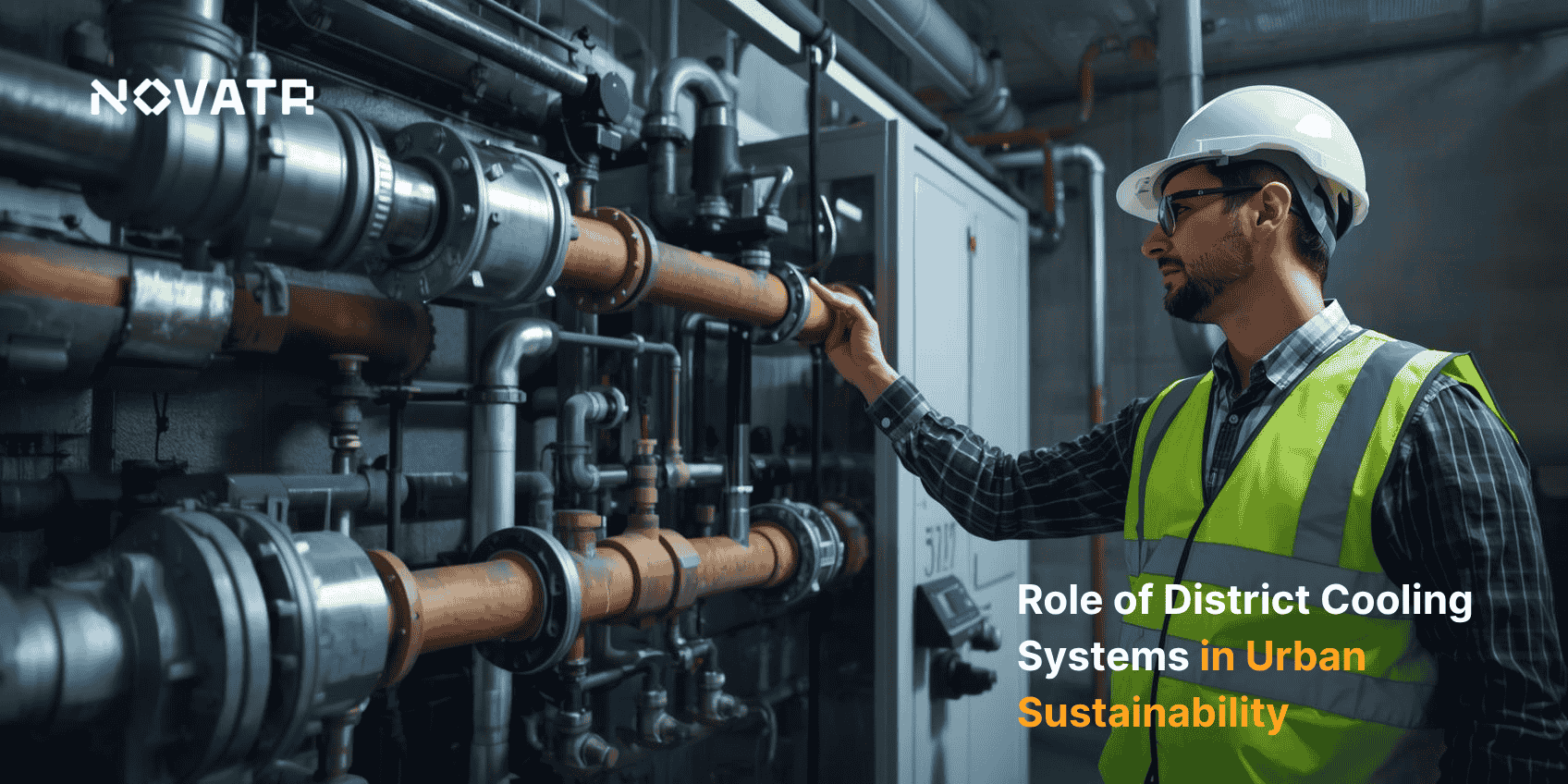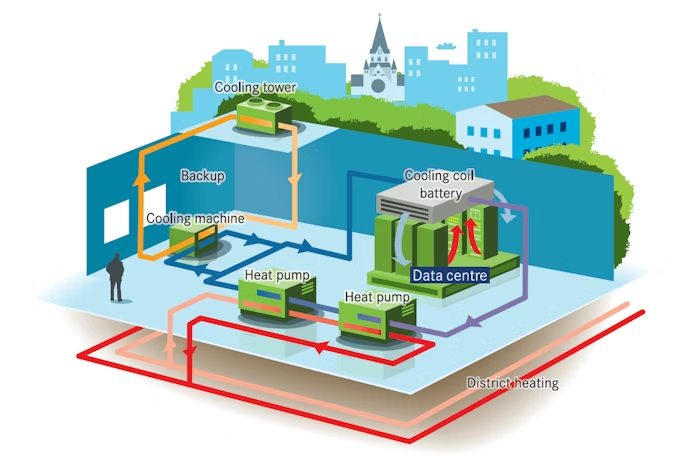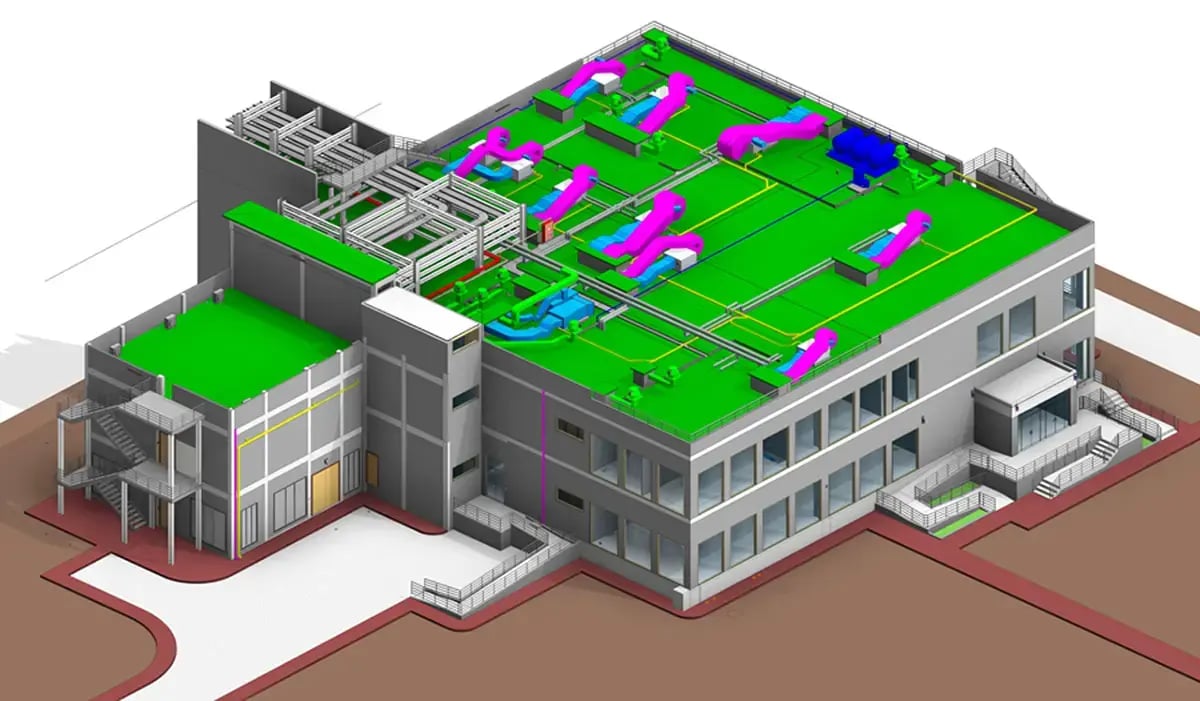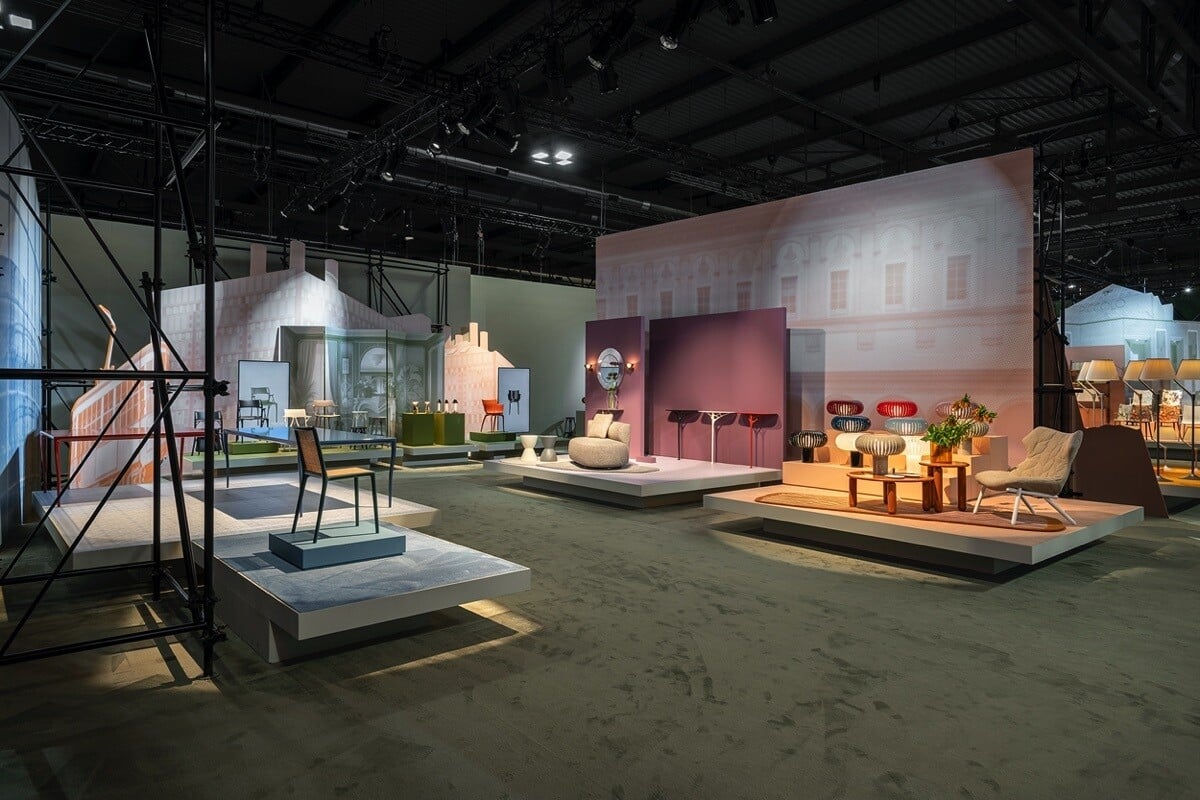
District cooling systems are transforming urban environments by providing efficient, centralized thermal energy for multiple buildings. These systems optimize energy use while maintaining comfortable indoor conditions and reducing environmental impact, highlighting the role of centralized cooling in city planning in modern urban design. In the USA, an HVAC engineer's salary averages $82,050/year, reflecting the technical expertise required to design and manage such systems.
By distributing chilled water through insulated networks, district cooling reduces electrical demand and supports sustainable resource management.These advantages lead to significant energy savings with district cooling systems, positioning them as a key strategy for sustainable urban development.
What Are District Cooling Systems And Why Are They Important For Urban Sustainability?
District cooling systems provide centralized chilled water from a central plant to multiple buildings through an insulated network, enabling efficient temperature control and reducing reliance on individual air conditioning units. These systems support large-scale energy distribution and enhance building performance, demonstrating how urban energy management is enhanced by district cooling while minimizing environmental impact.
District cooling systems are important for urban sustainability because they:
-
Reduces overall energy consumption across connected buildings, improving operational efficiency.
-
Lowers greenhouse gas emissions by centralizing cooling and optimizing system performance.
-
Minimizes water usage through advanced cooling techniques, conserving resources.
-
Decreases peak electricity demand, easing strain on the urban power grid.
-
Enhances long-term cost-effectiveness, supporting sustainable urban infrastructure.
-
Promotes efficiency optimization in district cooling systems, improving building comfort and environmental sustainability.
How Do District Cooling Systems Work And Integrate With HVAC In MEP Design?

District cooling systems operate by producing chilled water at a central plant and distributing it through insulated pipelines to connected buildings. This approach reduces individual building cooling loads while maintaining consistent temperatures. Coordinating with building HVAC units ensures efficient energy transfer and optimal performance, demonstrating effective HVAC integration in cities while avoiding strain on infrastructure or operational complexity.
Key aspects of system operation and HVAC integration:
-
Central Plant Efficiency: Large chillers produce chilled water efficiently, supplying multiple buildings while minimizing energy losses.
-
Accurate Temperature Control: Sensors and automated systems maintain comfortable indoor temperatures without unnecessary energy use.
-
Balanced Water Flow: Proper pressure and flow management ensure consistent cooling across all connected buildings.
-
Energy Tracking: Monitoring systems provide real-time data for better performance and maintenance planning.
-
Scalable Design: The system can expand easily to serve new buildings or increased demand.
-
Sustainable Operation: Works with green building cooling strategies to lower energy consumption and minimize environmental impact.
Also Read: Top 50 MEP Interview Questions & Answers 2025
What Benefits Do They Offer In Terms Of Energy Efficiency And Reduced Carbon Footprint?
District cooling systems streamline cooling distribution by centralizing chilled water production and connecting multiple buildings. This approach allows precise management of energy loads, reduces reliance on individual equipment, and improves overall operational performance. When planned alongside green building guidelines for centralized cooling, these systems support long-term sustainability goals and efficient resource use in urban environments, enhancing city-wide energy management.
Key benefits of district cooling systems:
-
Consolidating cooling demand across multiple buildings reduces total energy consumption, improving urban efficiency and optimizing system performance.
-
Centralized operation minimizes greenhouse gas emissions, lowering the carbon footprint while supporting sustainable urban infrastructure.
-
Efficient electricity use during peak hours reduces grid stress and maintains stable indoor temperatures across all connected buildings.
-
Advanced cooling techniques decrease water consumption compared to individual systems, conserving resources without affecting overall performance.
-
Centralized operation provides long-term cost savings, illustrating the cost benefits of district cooling systems effectively.
-
Consistent and controlled cooling enhances building performance, maintaining comfort and improving energy efficiency across all structures.
How Do District Cooling Systems Impact Water Usage, Electrical Load, And Overall Building Performance?
District cooling systems manage building cooling efficiently, balancing energy and water use to reduce pressure on local utilities. Integration with HVAC infrastructure ensures stable indoor temperatures while optimizing overall performance. Thoughtful system design also supports MEP engineering planning, enhancing operational reliability across multiple buildings. Additionally, these systems demonstrate the impact of district cooling on building energy consumption without overloading infrastructure.
Key impacts of district cooling systems on water, electricity, and building performance:
-
Reduces water demand by using advanced cooling techniques, conserving resources compared to individual building systems.
-
Lowers peak electrical load, decreasing stress on the urban power grid during high-demand periods.
-
Maintains a consistent indoor climate, improving overall occupant comfort and building operational performance.
-
Enhances energy efficiency by optimizing system operation across multiple buildings simultaneously, reflecting effective MEP design for district cooling.
-
Supports predictive maintenance and monitoring, minimizing downtime and improving long-term reliability.
-
Encourages adoption of centralized cooling solutions, integrating efficiently with building systems and sustainable urban infrastructure.
Also Read: Boost Your MEP Engineering Career with BIM Mastery
What Role Does BIM Play in Planning, Designing, and Managing District Cooling Systems?

Building Information Modeling (BIM) helps coordinate design, planning, and operational management of district cooling systems efficiently. It allows accurate visualization, clash detection, and system optimization before construction. By integrating with digital tools, BIM for MEP Engineers supports precise planning and resource management, enabling smoother collaboration among stakeholders and helping ensure systems meet technical and sustainability standards across multiple buildings.
Key Contributions of BIM in District Cooling Systems:
-
Streamlines documentation and design updates, ensuring all changes are tracked accurately throughout the project.
-
Enhances coordination between multiple disciplines, reducing errors during construction and installation phases.
-
Supports predictive maintenance planning by modeling system performance and component lifecycles digitally.
-
Facilitates precise material quantity estimation, helping optimize procurement and reduce waste in the construction process.
-
Improves operational efficiency by enabling integration with MEP software for layout optimization and performance analysis.
-
Enables evaluation of energy-efficient cooling strategies by simulating system behavior under different load conditions.
Conclusion
District cooling systems have become a cornerstone of sustainable urban development, enabling efficient energy use, reduced environmental impact, and improved building performance. By centralizing cooling operations, these systems enhance resource management, lower peak energy demand, and support long-term operational efficiency across multiple buildings. Their integration with modern building systems ensures stable indoor climates while optimizing both water and electrical usage.
For professionals seeking deeper expertise, the BIM Course for MEP Engineers offered by Novatr provides valuable insights into planning and managing these systems. Visit our resource page to explore detailed guides, practical case studies, and tools that demonstrate how coordinated design and operational strategies improve overall urban sustainability, making district cooling systems an essential part of modern city infrastructure.
FAQs
1. How do district cooling systems support sustainable urban development?
Ans: District cooling systems provide centralized cooling for multiple buildings, reducing energy and water use. They lower greenhouse gas emissions and support efficient urban resource management, contributing to greener, more sustainable city infrastructure.
2. What are the main benefits of using district cooling over conventional HVAC systems?
Ans: District cooling minimizes individual building equipment, lowers operational costs, and improves energy efficiency. It reduces peak electricity demand, conserves water, and maintains consistent indoor temperatures across connected buildings.
3. How does district cooling reduce energy consumption in cities?
Ans: District cooling produces chilled water at a central plant and delivers it efficiently to multiple buildings. This centralized approach avoids redundant individual cooling, reducing overall electricity demand. It also ensures consistent energy use, improving city-wide efficiency and lowering urban power consumption.
Was this content helpful to you



.jpg)



